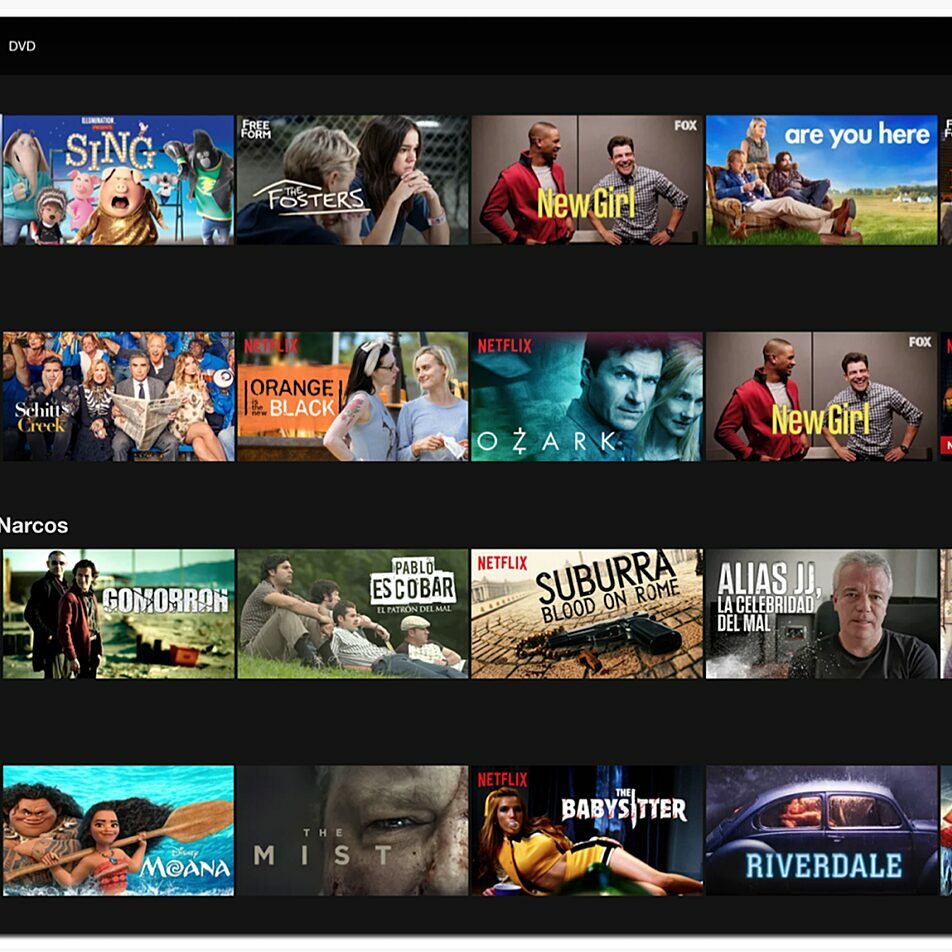Blog
Marketing

20 Marketing Trends in 2020
Are marketers ready for 2020? Not really. According to Moz, a search engine optimization tool, monthly searches for “marketing trends 2019” outpace “marketing trends 2020” by a 9-to-1 margin. That means—in my opinion—this blog is going to age gracefully as we begin 2020 and more folks get ready for a new decade.
So without further adieu, since 2020 is coming up, let’s explore 20 marketing trends for ... 2020!
1. Position Zero
Let’s continue the organic search theme and say it’s not enough to rank on the first page of Google results anymore. You need to hit Position Zero, the featured snippet above the fold. Start with good old-fashioned keyword research and focus on longer queries of six or more words that focus on answering questions.
Google’s latest update—BERT (Bidirectional Encoder Representations for Transformers)—helps Google understand language more like a human. It’s all about the context of your search, so cater to that through keyword research and writing in a natural way. The way people talk and search.

2. Organic Social is Dead
Notice the only people liking your company’s posts on Facebook are employees and relatives of employees? It’s because organic social is dead—unless you’re a big brand, a sports team or a higher-ed institution. Organic reach on social platforms is plummeting faster than network TV ratings. Maintain your social profiles for good optics and because you’ll need that real estate for paid social, but don’t spend too much time and energy on it. It’s just not worth it anymore.

3. Shoppable Posts are Alive
Not everything about organic social is “washed”—a term I learned from Millennials here in the 2010s, thank you very much. According to HubSpot, 80% of Instagram’s users already follow an active business shopping account. The user experience is great (opposite of “washed”) in that the buyer can stay within the platform they’re on (like Instagram) and complete the purchase right there.
They can then continue with their newsfeed scrolling to see the next picture their friend’s Instagram husband took of his wife sipping a craft beer in a field of gold.

4. Think Customer First
According to Salesforce, 54% of customers feel companies don’t operate with their best interests in mind. Too often, companies think of themselves first when sharing content with their customers. Flip it. Create a preference center so your customers can decide which of your content they want. Provide opportunities for them to opt out of your emails.
You’re going to have to do this soon anyway with laws like the California Consumer Privacy Act (in effect January 1, 2020) that impose fines on companies that don't disclose to customers what personal information they’re collecting from them and how they’re using their data. According to Gartner, companies that prioritize customer experience generate 60% higher profits than their competitors.
5. First-Party Data
Stop buying lists and blasting content to them. Instead, run your marketing on first-party data—data you own. You know your customers and prospects who have opted in to receive specific communications from your company. Social media is a rented space. You own your website and your first-party data. Do more with it. It’ll lead to better long-term results and more engaged audiences.

6. Personalization
Dale Carnegie said, “Remember that a person’s name is, to that person, the sweetest and most important sound in any language.” According to HubSpot, 70% of consumers get frustrated when content isn’t relevant to them. Few do personalization better than Netflix—customized content, based on what you, the customer, want.

7. Get Agile
If your brand isn’t agile, you better start getting there. Under an agile approach, work is organized into short deployments for faster changes and continuous improvement. Latest example of why this works? Aviation Gin with its sequel to the Peloton story. (Full video below.)
Only 15 days elapsed between the Peloton ad and Aviation Gin's response. Aviation took over social media for a week and had huge results. Over 9 million views on Twitter and 4 million more on Twitter.
8. Multi-Experience
Provide your customers with “multi-experiences.” What does that mean? Look no further than Domino’s . That’s right, Domino’s. With Domino’s Anyware, you can order your pizza through Alexa, a tweet, your car, even the messaging app Slack! So while you’re going back and forth with a coworker about how to update that client presentation, you can see if they want pepperoni on their pizza, as well.
9. Linear Journey is Gone
The days of the linear customer journey are gone—and maybe they were never here to begin with. You have to provide content to your customers when and where they want it. To do that, your marketing has to run on a complicated technology stack that connects and measures everything you’re doing.
Check out how Airstream structures its tech stack to sell its travel trailers and coaches. I feel like one of these trailers would look great at a Buffalo Bills tailgate, wouldn’t it?

10. Go Beyond Google Analytics
You better be going beyond Google Analytics to measure the success of your marketing campaigns. Google Analytics is nice to see numbers, like how many people have visited your website, how long they're spending there and the top pages they're visiting.
But to get the data you need to deliver personalized marketing, you also need to measure how your customers are engaging with your brand through email and lead nurturing, marketing automation platforms, social media and more.

11. Getting Geeky
If the graphic below doesn’t sum it up, I’m not sure what does. Marketing is getting geeky, folks. Do you have data analysts and marketing automation experts on your team? If not, now’s the time.

12. Chatbots
I know. You’ve read about chatbots as trends for five years now. You probably don’t have chatbots on your website and you're sick of hearing about them. I get it. But chatbots are a great way to improve engagement on your website, and they’re effective at educating prospects and helping customers.
They’re very trackable and can integrate directly with your marketing automation platform. You’ll need a copywriter to work with your marketing operations expert and website developer to maximize the impact, but it’s worth it. Accenture Digital reports that 57% of companies agree chatbots deliver large ROI with minimal effort. It's a lot of effort up front, though.
13. Artificial Intelligence
Air Canada took flight with artificial intelligence—and it paid off. Working with Persado, Air Canada created 32 AI versions of an email to measure which emotions delivered the best ROI. The result? Anxiety language drove 48% more email opens for Air Canada than other emotions, including exclusivity, safety, intimacy and curiosity. And click-throughs were 220% higher with the call to action of “See Deals” vs. “Book Now.”

14. Interactive Content
A DemandGen report found that 91% of buyers are looking for more visual and interactive content, whereas just 5% would provide detailed contact information in exchange for a white paper. Static content is fine. Interactive content is better—it caters to your audience and makes your content more engaging and trackable. The user can choose their own experience and pull up the content journeys that matter most to them within the content piece itself.
15. Shelf Life
The power of content marketing is the investment it provides that grows over time. Old content remains powerful. We've built a content strategy for Finger Lakes Visitors Connection (FLVC) that focuses on using search data to provide useful content ideas for our audience that we help create through blogs, videos and more. But these aren't "one and done" things. In fact, we've used past content more than once, often just reformatting it and sharing it again. The result? A 24% increase in organic traffic, 22% increase in web traffic as a whole and more than 3,000 leads. Take a look at FLVC's blog and you'll see a firsthand example of how we do it.
And yes, another shameless plug. We talked about how Disney+ has a content strategy solely focused on using nostalgic content.
16. VR & AR
Ah, yes. Another element you've probably seen for the past five years in these marketing trends articles. Virtual reality/augmented reality. To be honest, VR/AR doesn’t apply to many brands. But when it does? When it makes sense? It can provide a tremendous user experience. Look at what Gucci did with AR in this example.
17. Amazon on the Rise
Google and Facebook are still the kings of paid media in the digital space. But Amazon is on the rise. Its share of global digital ad spend will reach 8% by 2023, compared to 3% last year, according to Juniper Research's recent report, "Future Digital Advertising: Artificial Intelligence & Advertising Fraud 2019-2023."

18. Long Attention Spans?
Sure. The human attention span is that of a goldfish. 9 seconds or whatever. Right. Short attention spans need to be catered to. But what about long attention spans? I watched Game of Thrones without ever looking at a second screen.
Good content means—gulp—you might engage your audience for more than 9 seconds! ABC promoted the second season of A Million Little Things by playing the pilot as a pre-roll ad only on YouTube on TV screens. They tied this idea to a 30% spike in searches in 2018 for “what shows to watch.” But that pilot episode, which promoted streaming Season 1 on Hulu, wasn’t the only path viewers could take.

19. Lifecycle Marketing
It’s no longer just about using advertising to attract people to buy your product. The real power of marketing is when you can use it to create brand ambassadors—delighting them with content they want, when they want it and where they want it.

Here's a little more on HubSpot's "flywheel" method.
20. Customer Experience
An old trusty—this could have been included in a “Marketing Trends in 1920” piece that even Babe Ruth himself might have enjoyed. It’s something I have touched on throughout this piece: customer experience. According to a report by the Temkin Group, a moderate increase in customer experience generates an average revenue increase of $823 million over three years for a company with $1 billion in annual revenues. As Larry David would say, that’s “prettay, prettay … good.”
So what's next?
No matter the latest trend or the shiniest penny, don’t ever forget to create and tell good stories with your customer at the forefront of your mind. Shoppable posts are great. VR/AR is cool. But none of it matters if your content is “washed.”
Oh, and get ready. Because 2020 is here! Time to bump up the search volume, fellow marketers, on “marketing trends 2020.” And with any luck, this piece—while maybe not achieving Position Zero—will appear on Page 1 of your search results.
Happy holidays and Happy New Year!

Jon Alhart
Jon unites people and resources, piecing together the full marketing puzzle to drive impact in emerging digital spaces. He’s a graduate of Ithaca College and is certified in Advanced Google Analytics, HubSpot Inbound Marketing, Google Ads Search and Marketo. And he wraps all of that in 20+ years of nonprofit, sports, events, financial services, healthcare, retail and telecom experience. Including giving his time to Baden Street Settlement.